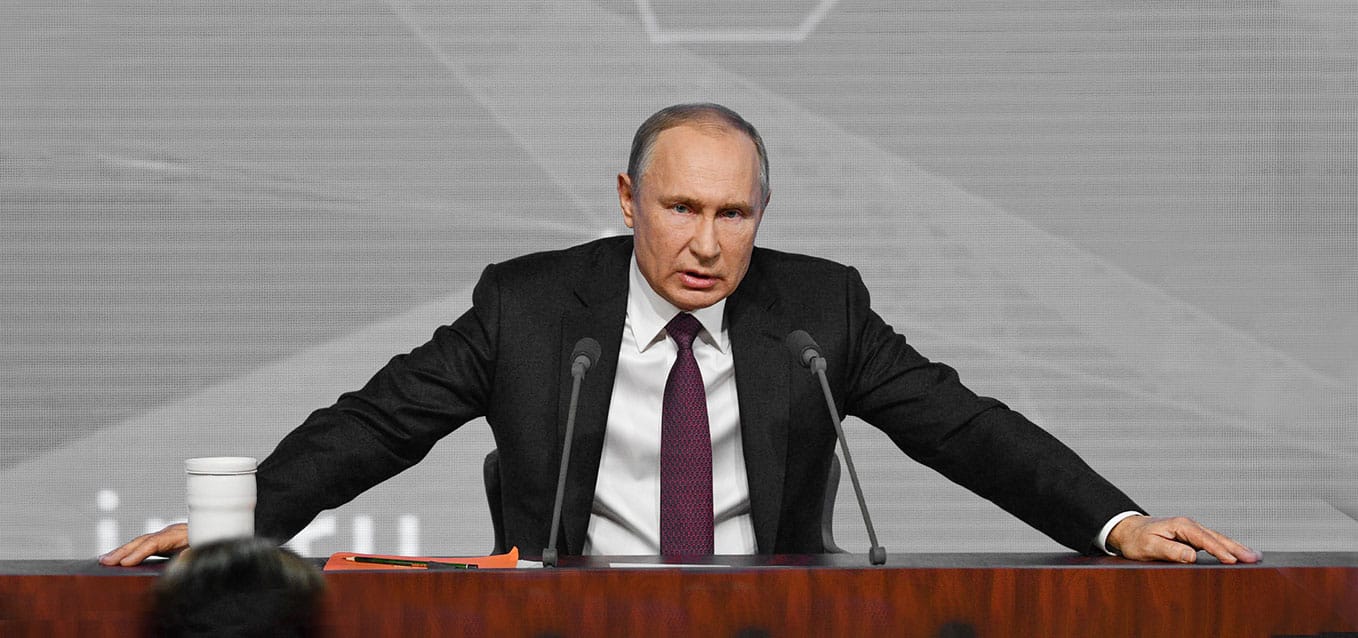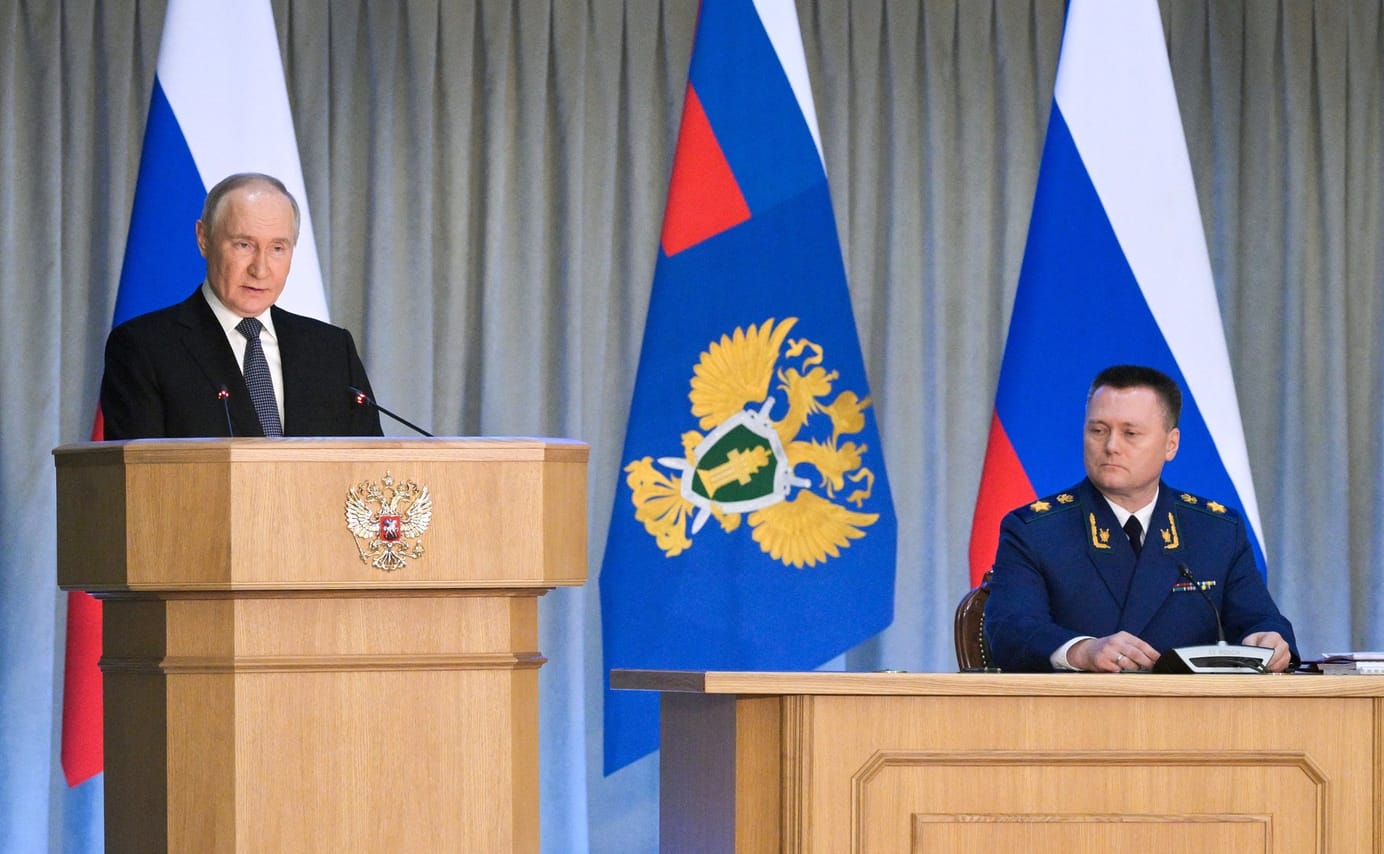
Russia feels the bite of secondary sanctions
Hello! Welcome to your weekly guide to the Russian economy — written by Alexander Kolyandr and Alexandra Prokopenko and brought to you by The Bell. This week our top story is how secondary sanctions imposed by the West are limiting Russia’s ability to do business. We also look at the impact of Ukrainian drone strikes on oil refineries.
U.S. secondary sanctions increase transaction costs for Russian foreign trade
U.S. President Joe Biden’s executive order imposing “secondary sanctions” on any companies party to financial transactions involving Russia’s defense sector has had a tangible effect since it was introduced in December. As a result, companies in China, Turkey, the UAE, and other countries that maintain ties with Russia are delaying payments for Russian exports, and banks are terminating relations with their Russian counterparts.
What’s going on?
Since the full scale invasion of Ukraine in 2022, it has been increasingly difficult for Russian firms to make international payments. However, Biden’s order added significantly to their problems. We saw the first signs that Russia’s major new trading partners – China, India, Turkey – were taking this seriously in January. Since then, the problems have increased.
Banks in China, Turkey and the UAE this month began to demand written guarantees from their clients stating no individual or organization on the U.S. sanctions list was involved in a given transaction, Reuters reported. This led to months-long delays for payment of Russian oil deliveries. Last month, banks in the UAE stepped up payment verification. “Sometimes it takes weeks to complete a direct transaction,” one trader told Reuters.
Above all, if the U.S. can continue to disrupt transactions for Russian companies using the yuan, then it will be a serious blow. After the imposition of Western sanctions in 2022, the yuan has become widely used in Russian foreign trade. In December, the yuan accounted for more than a third of Russian imports and exports ($2.8 billion of Russia’s $5.8 billion in foreign currency exports was paid for in yuan, the Central Bank stated). The yuan surpassed the dollar in terms of turnover on the Moscow exchange last year with the Chinese currency accounting for 42% of trade, compared with less than 1% two years earlier.
China
After Biden’s order, all Chinese state banks ceased operations with companies linked to Russia’s defense sector, and stepped up checks on all other Russian clients. A dozen major private banks followed suit. This meant that the average verification time for transactions from Russia to China jumped to as much as 18 days, according to the Business Practices in China Telegram channel. However, for small Chinese banks, working with similarly small Russian counterparts, the transaction times are unchanged.
As a source at one Russian company explained to The Bell, “this isn’t a breakdown in transaction chains, but an adjustment.” He added: “Overall, payments have been made and continue to be made. It’s just that first-tier banks are being replaced by second- and third-tier banks.” China’s banking system has more than 4,500 banks, many of which have no correspondent relationship with the U.S. dollar or other reserve currencies. That means they have no fear of secondary sanctions.
The Bell’s source added that, the bigger the Russian bank and the more frequently it is mentioned in connection with sanctions, the less likely a payment from it will go through. In other words, payment chains are adapting to a new reality. “Before, the relationship was: client – Russian bank – foreign bank – client. Now there might be another three or five banks in the chain. But overall, it still works," the source said.
Turkey
The situation with other countries is even less clear. After Biden’s order, Turkish banks tightened their approach. The biggest Turkish banks started to close correspondent accounts with Russian credit institutions, and ceased servicing payments under contracts agreed after the invasion of Ukraine. Turkish exporters also asked the authorities to exempt contracts with Russian firms from the legal requirement to repatriate foreign earnings, Turkish business publication Ekononim reported earlier this year. According to Ekononim, problems began with payments after U.S. Secretary of State Anthony Blinken visited the country.
Turkish exports to Russia in February fell 33% year-on-year to $670 million, according to Turkish Trade Ministry data. “U.S. dollar [payments] are getting worse, but rubles and lira are going through,” said a federal official.
UAE
In the UAE, leading banks have restricted settlements with Russia and are beginning to close accounts for companies and individuals, business daily Vedomosti reported. Local banks have stopped accepting money from Russia, and have closed the accounts of companies owned by Russians. There are regular cases where transfers to an account are merely returned to the sender, according to Vedomosti. Several banks require explanatory documents for nearly every transaction, and it can take a long time to complete payments.
What’s the effect on Russia?
Secondary sanctions limit Russia’s ability to use reserve currencies – U.S. dollars, euros and pounds – for international payments. These currencies are easier to use for international trade because the more people use something, the more accepted it becomes. For example, 80% of cases in which the U.S. dollar is used as the currency for an import transaction have nothing to do with the United States. Not only is it easier for exporters to pay in a currency that they can use as widely as possible, it’s also more profitable for countries with small markets to nominate prices for their goods in a reserve currency.
Why the world should care
International payments are becoming a bottleneck that limit Russia’s ability to conduct trade with Asian countries, and stymie its efforts to circumvent sanctions. Biden’s order has greatly complicated life for import-export businesses and increased transaction costs. However, since there is a payment infrastructure for rubles and yuan, it’s not a knock-out blow.
Ukrainian attacks on Russian oil infrastructure hit output
Ukrainian drone strikes on Russian oil refineries are intensifying, and they appear to be starting to have a serious effect on the availability of gasoline.
- Reuters reported Thursday that, after a drone attack, state-owned oil giant Rosneft halted operations at its Kuibyshevsky refinery in Samara. Last year, this refinery processed 3.7 million tons of oil, or 1.3% of Russia’s refined oil. Its potential capacity, according to Rosneft, is twice as much.
- On the same day, Rosneft restarted its Ryazan refinery, which was halted by a drone attack on March 13 and lay inactive for two weeks. According to Reuters, Rosneft relaunched production at 60% of its previous capacity.
- In total, Reuters calculated that up to 14% of Russia’s refinery capacity is currently out of action. Since Ukraine appears capable of hitting targets within a 1,000km range, more than a third of Russia’s refinery capacity is under threat.
- Russia banned gasoline exports at the end of February. And increased its imports of Belarusian gasoline the following month (this has gone from zero in January to 3,000 tons in March). Western sanctions are obviously having an effect when it comes to the speed with which damaged refineries can be repaired.
- The State Statistics Service reported that, between March 18 and March 24, gasoline production in Russia was down 7.4% on the previous week and 14.3% year-on-year. Prices for gasoline are rising on the stock exchange, through which a quarter of all fuel is sold. But, for the moment, consumer prices remain stable: they increased 0.08% last week, and have gone up 0.63% since the start of the year.
Why the world should care
Shutting down refineries following drone attacks is not a serious problem. And Russia appears to be able to cover any temporary loss of capacity by importing gasoline from Belarus. However, the situation could deteriorate. If the attacks continue, the government would be forced to either regulate prices, accept increased inflation, or move valuable air defense systems to protect the refineries.
Figures of the week
From March 19 to March 25, weekly inflation in Russia increased from 0.06% to 0.11%. After a slowdown last week, annual inflation also accelerated – from 7.58% to 7.61%. Food prices were up 0.1%, non-food prices went up 0.09%.
Industrial production in Russia in February rose 8.5% year-on-year and 1.5% month on month. This was driven by manufacturing companies (particularly those producing metals and metal products – a key part of the defense industry).
Further reading
The Tyranny of Expectations. Winning the Battle but Losing the War, from Ukraine to Israel
Forget about Trump: Why Europeans should start worrying about trade tensions with emerging economies





